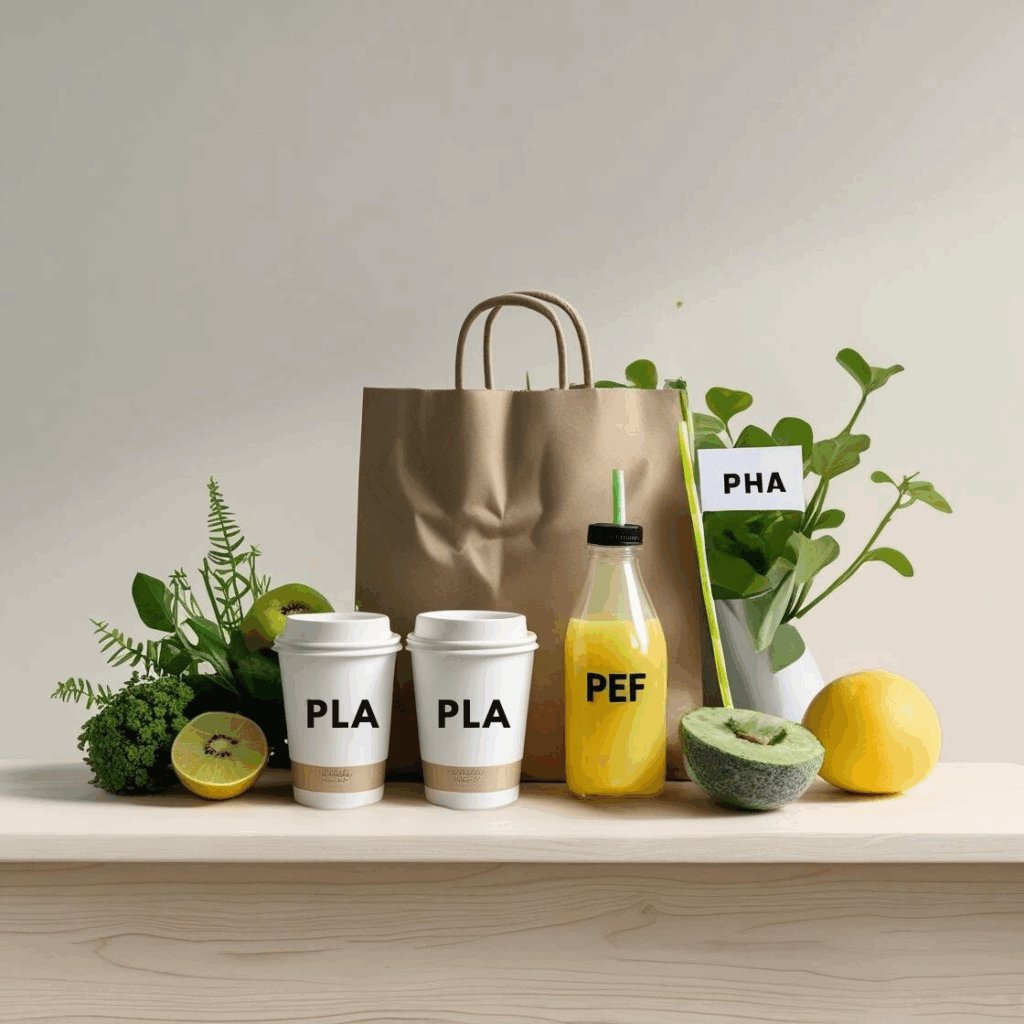
Plastics touch every part of modern life. We see them in the packaging of our food, the clothes we wear, and the gadgets we use each day. Yet, most plastics come from oil and gas. This leads to pollution and waste problems worldwide. That challenge has inspired inventors and scientists to find new, cleaner solutions. Bioplastics have emerged as a field where sustainability and innovation converge.
Four bioplastics changing the game
Four materials are particularly important: PLA, PHA, PBS, and PEF. With real-life applications, these bioplastics are transforming both industry and society.
What makes bioplastics different?
Bioplastics are not just “environmentally friendly plastics.” They stand apart because they come mostly from renewable plants—like corn, sugarcane, or even food waste. That shift means lower carbon emissions from the start.
Some bioplastics, like PLA and PHA, also break down naturally. Others, like PEF, are designed to be recycled repeatedly. These properties make them smarter options for packaging, medicine, agriculture, and more.
PLA: a pioneering bioplastic with versatility
Polylactic Acid (PLA) is perhaps the most familiar of all bioplastics. It is made by fermenting sugars from crops such as corn or sugarcane. PLA has quickly made its way into supermarket aisles and café counters worldwide. Think about clear cups, clamshell packaging, and even plant-based filament for 3D printing.
You’ve likely used PLA without realizing it. Many compostable takeaway boxes and biodegradable coffee cups contain PLA. Medical professionals also use it in dissolvable sutures that break down in the body, eliminating the need for removal.
One key feature is compostability, but with a catch: PLA requires industrial composting conditions—high temperatures and moisture—to break down. In these facilities, PLA decomposes into water, carbon dioxide, and organic materials. It leaves no microplastic residue.
PLA does not perform well at high temperatures, which limits its use in hot beverage cups. However, its clarity, rigidity, and food safety make it a favorite for green packaging.
PHA: nature’s plastic, made by microbes
Polyhydroxyalkanoate (PHA) stands out because it’s produced by microorganisms. Bacteria “eat” plant oils or sugars and store the bioplastic within their cells. This bioplastic is then harvested, purified, and used in products from compostable cutlery to medical implants.
You might see PHA in biodegradable straws or snack wrappers. In agriculture, some mulch films use PHA, breaking down safely after harvest. Medical teams apply PHA-based stitches and implants that dissolve naturally during healing.
PHA is special because it biodegrades in soil, compost, rivers, and even oceans. This is crucial for single-use items prone to littering. PHA is flexible: some types are soft, while others are strong. Melting points range from 40°C to 180°C. The downside? PHA is still costly, though innovation is lowering production expenses.
PBS: the heat-tolerant alternative
Polybutylene Succinate (PBS) is a flexible, heat-resistant bioplastic. It is made by combining succinic acid and 1,4-butanediol—both of which can come from renewable sources.
Products like biodegradable shopping bags, containers, and straws are often made with PBS. Microwave-safe trays and food packaging also use it for its heat durability.
PBS breaks down in industrial composting or even soil. It is also blended with other bioplastics to enhance performance. Its durability and heat resistance make it ideal where PLA falls short.
PEF: a next-gen material for bottles
Polyethylene Furanoate (PEF) is an exciting innovation in packaging. Made from plant sugars, PEF resembles PET (used in soda bottles) but performs better.
PEF creates a strong barrier against oxygen and carbon dioxide. This keeps food and drinks fresh longer. While not biodegradable, it is 100% recyclable. As recycling systems expand, PEF could replace many single-use plastics.
You might find PEF in juice bottles or packaging for sensitive foods. Its strength and excellent barrier properties make it appealing for brands focused on sustainability.
Challenges and future promise
Each of these bioplastics—PLA, PHA, PBS, and PEF—offers unique benefits. Still, challenges exist. Composting infrastructure is limited. Recycling and sorting systems are inconsistent. Costs remain higher than conventional plastics. Consumers also need better labeling and guidance to dispose of items correctly.
Fortunately, biotechnology advances are making production cleaner and cheaper. Standards and recycling infrastructure are improving. Bioplastics are becoming more scalable and accessible.
Why it matters
Whether you’re a consumer, business owner, or sustainability advocate, bioplastics are shaping how we think about packaging and waste. PLA, PHA, PBS, and PEF represent a cleaner, smarter path forward.
These materials are more than alternatives. They are tools for building a circular economy. By learning about them, we can all make better, more sustainable choices. The future of plastic doesn’t have to be wasteful. It can be smart, safe, and sustainable.
Learn more
To follow MoeBIOS’s journey toward sustainable bioplastics recycling:
- Visit our project website
- Follow us on LinkedIn
- Join us on X (formerly Twitter)
Stay informed, stay engaged—and help us redesign the future of sustainable packaging.

